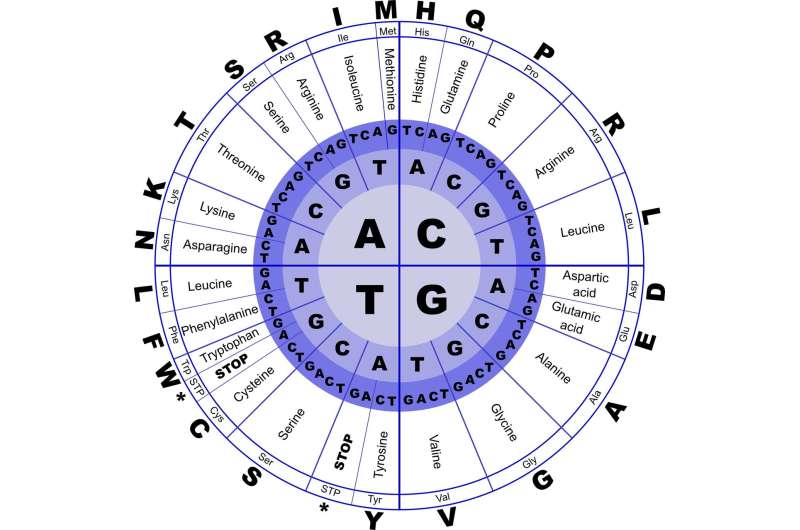This article has been reviewed according to Science X's editorial process and policies. Editors have highlighted the following attributes while ensuring the content's credibility:
fact-checked
trusted source
proofread
Researchers use supercomputer to determine whether 'molecules of life' can be formed naturally in right conditions

Basic biology textbooks will tell you that all life on Earth is built from four types of molecules: proteins, carbohydrates, lipids, and nucleic acids. And each group is vital for every living organism.
But what if humans could actually show that these "molecules of life," such as amino acids and DNA bases, can be formed naturally in the right environment? Researchers at the University of Florida are using the HiPerGator—the fastest supercomputer in U.S. higher education—to test this experiment.
HiPerGator—with its AI models and vast capacity for graphics processing units, or GPUs (specialized processors designed to accelerate graphics renderings)—is transforming the molecular research game.
Until a decade ago, conducting research on the evolution and interactions of large collections of atoms and molecules could only be done using simple computer simulation experiments; the computing power needed to handle the datasets just wasn't available.
It is now, thanks to HiPerGator. Using the supercomputer, UF Ph.D. student Jinze Xue (from the Roitberg Computational Chemistry Group) was able to conduct a large-scale early Earth chemistry experiment during the 2023 winter break.
Xue utilized more than 1,000 A100 GPUs on HiPerGator, and performed a molecular dynamics experiment on 22 million atoms that identified 12 amino acids, three nucleobases, one fatty acid, and two dipeptides. The discovery of larger molecules, which would not have been possible in smaller computing systems, was a significant achievement.
"Our previous success enabled us to use Machine Learning and AI to calculate energies and forces on molecular systems, with results that are identical to those of high-level quantum chemistry but around 1 million times faster," said Adrian Roitberg, Ph.D., a professor in UF's Department of Chemistry who has been using Machine Learning to study chemical reactions for six years.
"These questions have been asked before but, due to computational limitations, previous calculations used small numbers of atoms and could not explore the range of time needed to obtain results. But with HiPerGator, we can do it."
Erik Deumens, Ph.D., the senior director for UFIT Research Computing, explained how this full takeover of HiPerGator was possible.
"HiPerGator has the unique capability to run very large 'hero' calculations that use the entire machine, with the potential to lead to breakthroughs in science and scholarship," Deumens said. "When we found out about the work Dr. Roitberg's group was doing, we approached him to try a 'hero' run with the code he developed."
The emergence of AI and powerful GPUs can enable such data-intensive scientific simulations to be carried out—calculations that scientists could only imagine a few years ago.
"Using Machine Learning methods, we created a simulation using the complete HiPerGator set of GPUs," Roitberg said. "We were able to see, in real time, the formations of almost every amino acid (alanine, glycine, etc.) and a number of very complex molecules. This was very exciting to experience."
This project is part of an ongoing effort to discover how complex molecules can form from basic building blocks, and to make the process automatic through large computer simulations. Roitberg and his research group spent many hours working with members of UFIT. Ying Zhang, UFIT's AI support manager, ran point for the experiment.
"Ying put together a team comprised of Research Computing staff and staff from NVIDIA to help scale compute runs, provide invaluable advice and help, and accelerate analysis of the data to the point where the analyses were done in just seven hours (instead of the three days we initially expected it to take)," Roitberg said. "We met every week, from initial conception to the final results, in a very fruitful collaboration."
The results, and the short time in which HiPerGator was able to deliver them, were groundbreaking, bringing researchers one step closer to answering questions about how complex molecules are formed. And the fact that Roitberg was able to run this computation shows that UF has the capability to support "hero runs" or "moonshot calculations" that move scientific and engineering and scholarly projects forward.
"This is a great opportunity for UF faculty," Roitberg said. "Having HiPerGator in-house—with the incredible staff willing to go above and beyond to help researchers produce groundbreaking science like this—is something that makes my non-UF colleagues very jealous."
Provided by University of Florida




















